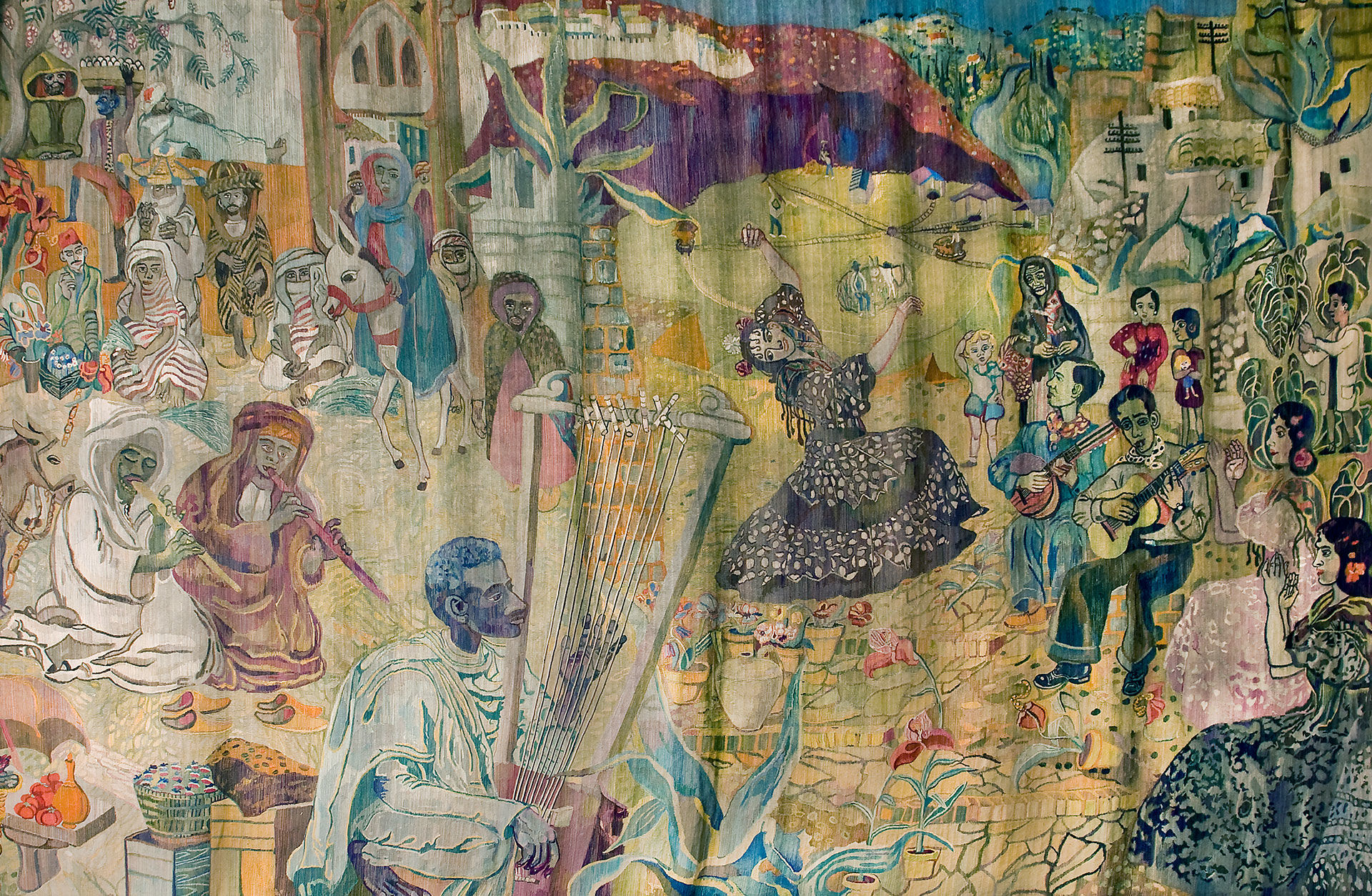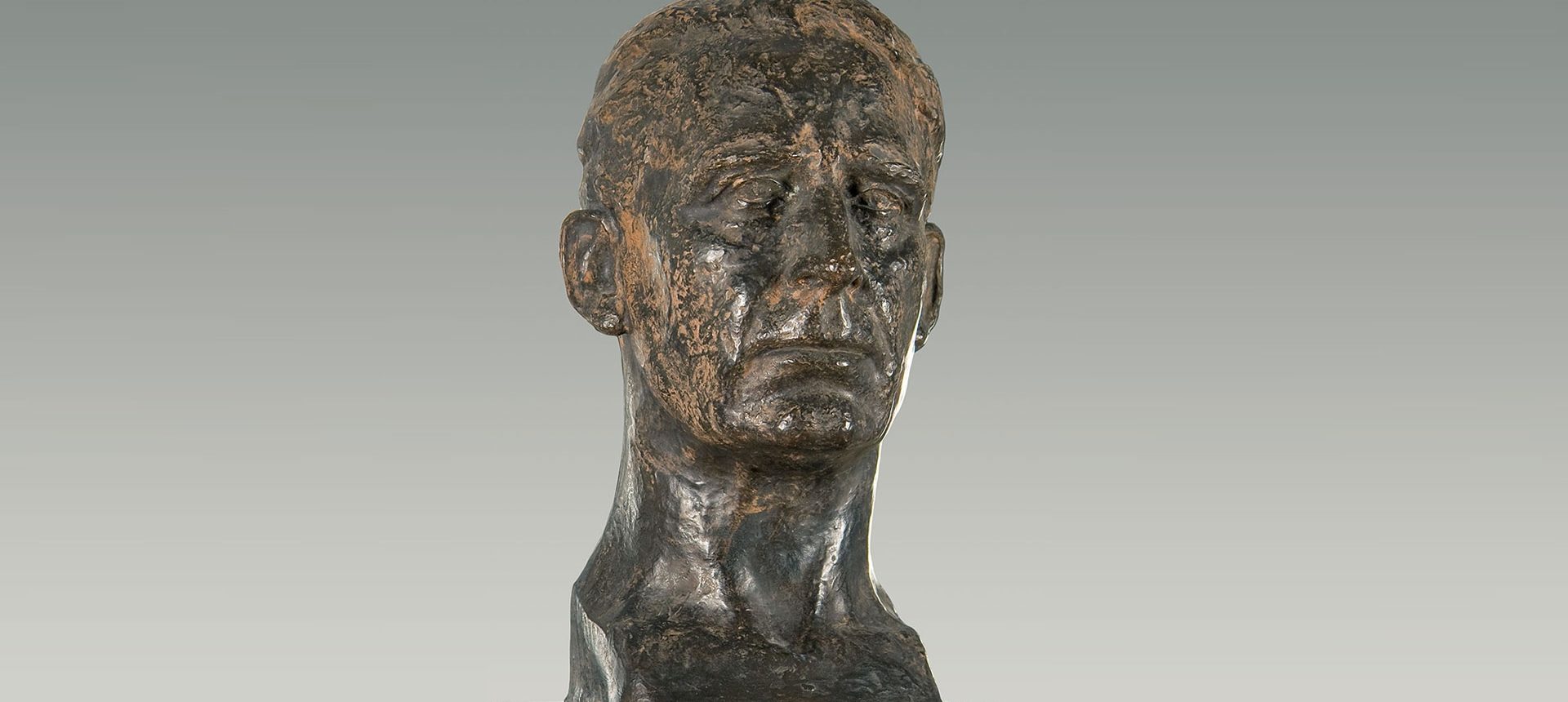Portrait in bronze by the composer Gösta Nystroem (1890-1966), who has a special place in the history of the Gothenburg Symphony Orchestra. Nanna Johansen-Ullman (1888-1964) created the artwork in 1944.
Gösta Nystroem was born in Dalarna, grew up in Södermanland and received his music education in Stockholm and Copenhagen. After more than a decade in Paris, where he studied for the composers Leonid Sabanejev and Vincent d’Indy and was influenced by his colleagues and pioneers Stravinsky and Debussy, he moved to Gothenburg in the early 1930s with his wife and sculptor Gladys Heyman. Here, of course, he composed and was a reviewer in Göteborgs Handels- och Sjöfartstidning.
As early as 1927, some of his songs were performed by Eric Zetterman and the Symphony Orchestra under the direction of Matti Rubinstein in the Concert Hall at Heden. Then followed several works, among them the atmospheric music Ishavet (intended as ballet music for the Swedish Ballet in Paris) in 1928, the tribute piece Ouverture symphonique to the Gothenburg Symphony Orchestra’s 40th anniversary in 1945 and his most well-known orchestral work Sinfonia del mare (no. 3) in 1949. All six symphonies have been played by the Symphony Orchestra, the last Sinfonia tramontana 1967.
Gösta Nyström’s music came to be influenced by the French art music of the time and was mixed with the more Nordic melancholy. He made himself known for his romances and collections such as Songs by the Sea and Soul and Landscape. During his youth he was also active as a visual artist and was one of the first Swedish Cubists. 1934-1936 he worked as curator for Gothenburg Art Gallery.
Nanna Johansen-Ullman (1888-1964)
The bust of Gösta Nystroem was made in 1944 by the Danish artist Nanna Johansen-Ullman (1888-1964), born in Copenhagen. Her father Viggo Johansen was one of the more famous and established artists of that time in Denmark. 1911-1915 she trained as a sculptor at the Academy of Fine Arts in Copenhagen.
In the 1920s, she met the Swedish artist Sigfrid Ullman, whom she later married. In 1929, the couple moved to Gothenburg, where Sigfrid Ullman succeeded Tor Bjurström as a teacher at Valand’s painting school until 1938. In 1932, Nanna Johansen-Ullman exhibited at Gothenburg Art Gallery with her husband and in 1946 with Ivan Jordell. She is represented at the National Museum, the Modern Museum, the National Gallery in Oslo and at the Gothenburg Art Museum. Examples of her work are also available at Bergagårdsskolan on Hönö, in Palmhuset in Trädgårdsföreningen (fountain) and at Sahlgrenska University Hospital’s women’s clinic (Mother and child).
40 x 19 x 26 cm (hxdxb)

Art with music in focus
Many of the works of art in Gothenburg Concert Hall are connected to music or have a relationship with Gothenburg Symphony Orchestra. Here you will find everything from portraits of composers such as Grieg and Sibelius to Sweden's largest weave with patterns by Sven X-et Erixson.
Experience the concert magic
Gothenburg Concert Hall has enchanted music lovers since 1935! It is one of life’s great pleasures to come here, relax and take in the atmosphere in the beautiful surroundings, before being moved, exalted and overwhelmed by the evening’s music.

